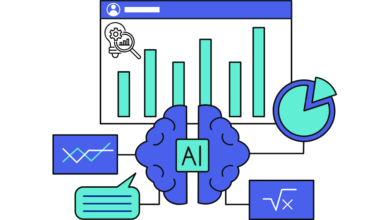Artificial Intelligence (AI) may appear to be new to some. However, AI applications have long been used in the transportation industry. A Global Positioning System (GPS) is built into many modern cars as well as some of the best cars available today. This technology uses information from satellites to determine where we are on the planet. GPS utilizes AI to choose the optimal route between two locations.
Artificial intelligence systems have learned to anticipate the optimum paths from massive data sets. They employ real-time information from users with this data. This involves things like how quickly they drive along the route and other factors. People may benefit from having access to both kinds of data because they can provide accurate and precise information about their journey.
The self-driving car can even help drivers get around traffic and avoid construction. A significant amount of data was required to teach these systems to do what they can do today. Many people using their GPS got lost in the early years because they relied too much on it.
AI is also used in many of today’s safety technologies. Driver assistance, for example, is an AI-driven technology that assists drivers in detecting potential threats. Beeping when a vehicle drifts out of its lane is one example.
Automated functions such as autopilots, sensors, and collision avoidance systems can assist with the act of driving. The anti-lock braking (ABS) is one such system. ABS is a safety technology that prevents the wheels of a vehicle from locking up when you apply intense brake pressure.
Traffic Monitoring with AI
Remember to compliment the city planners on their efforts to improve road flow the next time you’re caught in traffic. The use of traffic signal sensors may be a good idea. An AI system receives the data and interprets it. It may then use traffic lights to prevent delays at intersections. City planners might also utilize machine learning to improve road layouts. Furthermore, this might include, for example, replacing traffic signals with roundabouts.
Road Safety
Did you know that more than 1 900 people are killed in Canada in automobile accidents each year? This figure increases to about 1.35 million worldwide when looking at the entire globe. And this isn’t including the more than 20 million individuals who suffer non-fatal injuries every year.
There are three typical reasons for motor vehicle collisions. Speeding, impairment, and distracted driving are the main offenders. We may utilize AI systems to identify individuals who engage in these behaviors to enhance road safety. An AI system can look for patterns in individuals’ driving, whether good or bad. We may then instruct the systems to seek for particular objects that are hazardous, such as speeding.
Self-driving Vehicles
Machines, unlike people, do not engage in activities that are dangerous or impulsive. This has led to questions about whether self-driving or autonomous automobiles can make our roadways safer.
The safety of autonomous vehicles is the essential element behind their development. However, it isn’t the only one to consider. Another consideration is time. Imagine if people had more time on their hands while driving rather than doing other more fun or productive things.
Autonomous vehicles fall into several categories, each with its capabilities. The degree to which a car is autonomous varies by type. Most modern cars feature some aspects of Stage 2 automation. Some new models even have Stages 3 and 4.
Tesla’s Autopilot technology is used in some of its vehicles. These cars can drive themselves on certain roads, such as the highway. It’s worth observing that this technology is still experimental; it isn’t flawless yet. While using autonomous automobiles, drivers must keep their attention on the road.
Both hardware and software are required for cars to operate. The hardware is made up of sensors and mechanical components. It allows the automobile to sense its surroundings and provide data to the vehicle’s computer. The driver’s eyes, hands, and legs are all similar. Computer programming is referred to as software. It allows the car’s computer to make judgments. It’s like the brain of the driver in terms of functionality.
Many types of sensors are used to perceive the surroundings in autonomous cars. High-definition cameras, ultrasonic detectors, radar, and LIDAR are all examples. Radar employs radio waves to identify targets. LIDAR is similar to radar but instead uses light pulses to identify objects.
On the other hand, the computer always looks for patterns and distinctions in digital data. Its algorithms are trained to find anomalies—unusual things that aren’t supposed to be there, but they can spot nevertheless. They’re instrumental when visibility goes down due to weather conditions.
Programming Self Driving Cars
We believed that every person on earth would be driving in a driverless vehicle by now. So, why isn’t this occurring? It’s straightforward. Developing autonomous machines that can make judgments without the assistance of humans is difficult.
When driving, you may find yourself in an uncomfortable situation. For example, a motorist encounters a coyote standing in the middle of the road. A wide ditch lies on the roadside. The driver hopes the animal will flee, but it isn’t moving. In an attempt to avoid hitting the coyote, the driver swerves and loses control of the vehicle. Should a car be driven into a ditch to prevent striking a coyote?
Imagine attempting to write a computer program to make such a choice! This is precisely what AI technology researchers are trying to do. Do you believe that everyone makes the same decision as you when adopting a puppy? What is most important to you depends on your beliefs




